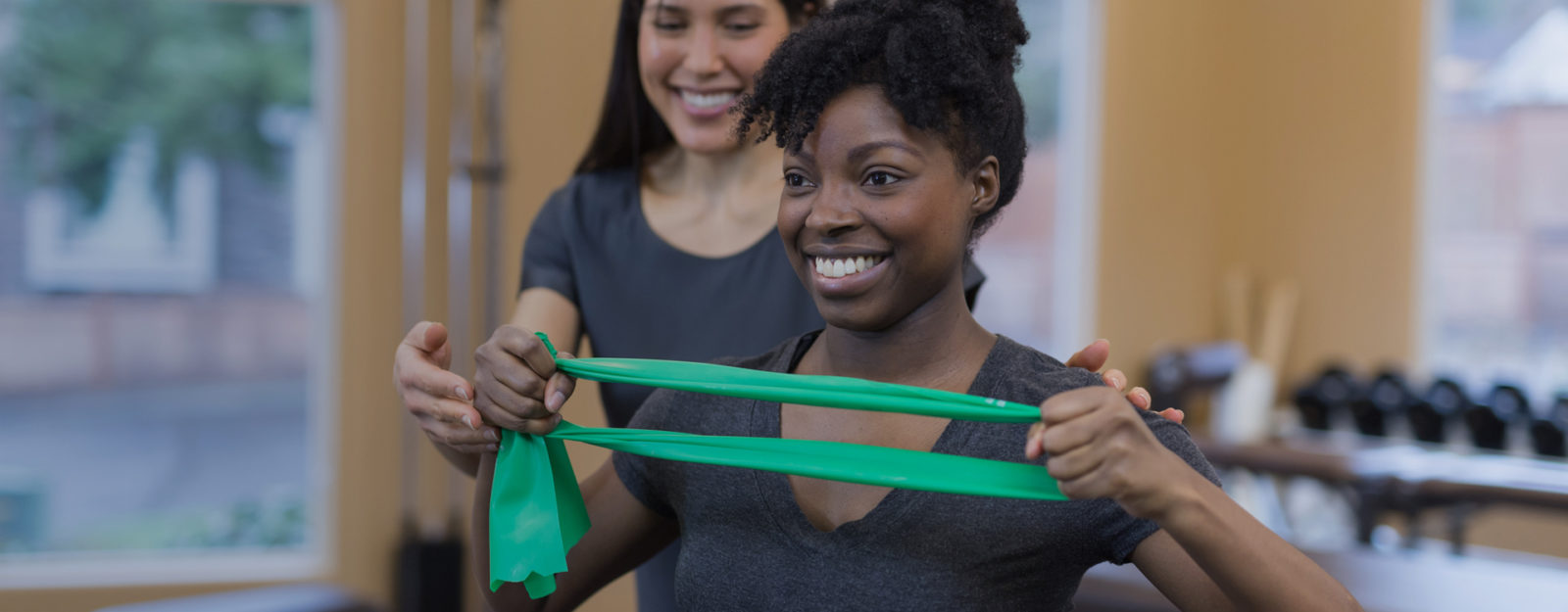
The journey following any breast surgery, whether it is reconstructive (such as a mastectomy or breast reconstruction), aesthetic (augmentation or reduction), or therapeutic (lumpectomy with lymph node dissection), extends far beyond the operating room. While the surgeon meticulously addresses the internal and external structure, the restoration of full physical function—specifically the mobility, strength, and neurological comfort of the upper body—falls squarely to the domain of physical therapy (PT). This specialized form of rehabilitation is not a supplementary treatment but rather a critical, integrated phase of the healing process. Failure to engage in timely, targeted, and professionally guided physical therapy can result in a cascade of preventable complications, including chronic pain, restricted shoulder motion, muscle weakness, and, most notably, the development of lymphedema. Understanding that the body’s reaction to surgical trauma involves complex changes in posture, scar tissue formation, and lymphatic function is the key to appreciating why prescribed movement and specific manual techniques are essential for achieving both the best aesthetic and the best functional outcome.
Restoration of Full Physical Function
The restoration of full physical function—specifically the mobility, strength, and neurological comfort of the upper body—falls squarely to the domain of physical therapy (PT).
The immediate response of the body to the trauma of breast surgery is often protective posturing, where the patient instinctively holds the shoulder on the operated side stiffly and close to the body. While this provides initial comfort, prolonged immobilization initiates a process of adhesion and tightening in the surrounding tissues. The goal of early physical therapy is to systematically and gently counteract this protective mechanism. PT focuses on regaining the full range of motion (ROM), particularly shoulder flexion (raising the arm forward) and abduction (raising the arm out to the side), which are often severely limited after procedures that involve the chest wall and armpit. The prescribed exercises start with passive and assisted movements, progressing carefully to active motion, all monitored to avoid stressing the incision sites. Re-establishing normal mobility is foundational, as functional limitations often lead to compensatory movements and chronic musculoskeletal pain elsewhere in the neck and back.
Counteracting the Cascade of Preventable Complications
Failure to engage in timely, targeted, and professionally guided physical therapy can result in a cascade of preventable complications, including chronic pain, restricted shoulder motion, muscle weakness, and, most notably, the development of lymphedema.
One of the most persistent and debilitating complications following surgeries that involve the axilla (armpit), particularly lymph node dissection or sentinel node biopsy, is the development of lymphedema. This chronic swelling of the arm, hand, or chest is caused by the damage or removal of lymph nodes and vessels, disrupting the normal drainage pathway for interstitial fluid. Physical therapy, specifically Complete Decongestive Therapy (CDT), plays the primary role in both the prevention and management of this condition. Prevention relies on a combination of exercises to stimulate lymphatic flow and patient education on risk reduction. For established lymphedema, CDT involves four key elements: manual lymphatic drainage (MLD), a specialized light massage technique to reroute lymph fluid; meticulous skin care to prevent infection; therapeutic exercise; and the application of compression garments or bandaging to maintain volume reduction. Early and consistent intervention can significantly reduce the severity and progression of this chronic, potentially life-altering condition.
Managing Scar Tissue: Addressing the Internal Tug
Aggressive scar tissue formation beneath the skin can create an internal ‘tug’ or tethering effect that limits mobility and contributes to persistent pain.
The process of wound healing, while necessary, inevitably leads to the formation of scar tissue at the incision sites. For breast procedures, particularly those involving large excisions or implants (such as a mastectomy or reduction), aggressive scar tissue formation beneath the skin can create an internal ‘tug’ or tethering effect that limits mobility and contributes to persistent pain, even long after the external incision has healed. Physical therapists use specialized techniques, known as scar mobilization or manual therapy, to address this internal rigidity. These hands-on techniques involve applying precise pressure and stretching to the scar and surrounding fascial tissue, aiming to soften the tissue, increase its pliability, and prevent it from adhering to the underlying muscle and fascia. Initiating scar management once the incisions are fully closed is vital for ensuring that the skin and subcutaneous layers move freely, which is critical for restoring full shoulder ROM without a pulling sensation.
Postural Readjustment: Correcting Compensatory Habits
The changes in the breast tissue’s weight, volume, or the psychological impact of the surgery often lead to a shift in the patient’s habitual posture.
Surgery on the breast area dramatically impacts the body’s center of gravity and the musculature of the chest and upper back. The changes in the breast tissue’s weight, volume, or the psychological impact of the surgery often lead to a shift in the patient’s habitual posture. For instance, a patient undergoing breast reduction may immediately benefit from the weight reduction but still maintain the forward-slumped posture they adopted for years to compensate for a heavy chest. Conversely, a patient after a mastectomy or lumpectomy may adopt a guarded, rounded-shoulder posture to protect the surgical site, leading to muscle imbalances—tight pectorals and weak upper back extensors. PT includes postural re-education, incorporating specific strengthening exercises for the rhomboids and middle trapezius muscles to pull the shoulders back and maintain proper alignment, thus preventing secondary complications like tension headaches and chronic neck pain.
Neurological Comfort: Addressing Phantom and Nerve Pain
Some patients experience unusual sensations, including chronic tingling, numbness, or even phantom breast sensations.
Breast surgery, especially those involving the armpit and chest wall, invariably impacts the sensory nerves in the area. Some patients experience unusual sensations, including chronic tingling, numbness, or even phantom breast sensations. This is a direct consequence of surgical trauma to the small cutaneous nerves. Physical therapists employ techniques to address this neuropathic pain and altered sensation. Desensitization techniques involve using different textures (soft to rough) to stimulate the numb or hypersensitive skin, gradually normalizing the nerve response. Additionally, nerve gliding exercises—gentle movements designed to encourage the peripheral nerves to slide smoothly within their surrounding tissue—can help reduce irritation and improve symptoms of chronic pain (e.g., intercostobrachial nerve pain, a common complaint after axillary surgery). Addressing these neurological symptoms is crucial for long-term comfort and the patient’s psychological recovery.
Restoring Strength: The Return to Functional Activities
The focus shifts from simply achieving range of motion to systematically rebuilding the strength and endurance required for everyday tasks.
Once the incisions are healed and a safe range of motion has been restored, the physical therapy regimen progresses to strength training. The initial protective phase often leads to rapid muscle atrophy in the shoulder and upper back. The focus shifts from simply achieving range of motion to systematically rebuilding the strength and endurance required for everyday tasks, known as functional activities. This includes the ability to lift a bag of groceries, reach overhead to a high shelf, or push a heavy door open without discomfort. The exercises are introduced gradually, starting with very light resistance bands or body weight and escalating over time. Restoring strength is essential not only for functional independence but also for long-term joint health and stability, ensuring that the shoulder complex can handle the demands of pre-surgery life without strain or injury.
Optimizing Aesthetic Results: Tissue Pliability and Contour
The application of manual therapy techniques helps to smooth out fascial irregularities and improve the pliability of the tissue around implants or reduction scars.
While PT is primarily concerned with function, it has a significant, often underappreciated, role in optimizing the aesthetic outcome of the surgery. The quality of the final contour is influenced not just by the surgeon’s work but by the subsequent behavior of the soft tissues. Fibrosis and scar contracture can pull on the reconstructed breast or distort the outline of an implant. The application of manual therapy techniques helps to smooth out fascial irregularities and improve the pliability of the tissue around implants or reduction scars. This physical softening of the tissue allows the breast mound to achieve a more natural shape and texture. In the case of expanders used for reconstruction, physical therapy may aid the skin’s ability to stretch and accommodate the expansion process more comfortably and effectively, contributing directly to the final symmetry and softness of the reconstructed breast.
Collaborative Care: Communication with the Surgical Team
Physical therapy is not a supplementary treatment but rather a critical, integrated phase of the healing process.
The most successful post-operative rehabilitation occurs within a framework of collaborative care involving the patient, the surgeon, and the physical therapist. Physical therapy is not a supplementary treatment but rather a critical, integrated phase of the healing process. Regular communication between the PT and the surgical team is essential. The therapist needs to know the exact surgical procedure performed (e.g., which lymph nodes were removed, the type of implant used, the tension on the closure) to tailor the intensity and timing of the exercises. Conversely, the surgeon relies on the PT’s reports to track the patient’s progress in range of motion, identify any early signs of complications like stubborn lymphedema, or recognize excessive scar adherence that might require medical intervention. This integrated approach ensures that the rehabilitation plan is always aligned with the biological constraints and goals of the surgical repair.
Patient Empowerment: Education and Self-Management
Empowering the patient to take active ownership of their recovery through daily homework is a core pillar of the therapy.
Ultimately, the long-term success of physical therapy is heavily dependent on the patient’s commitment to self-management. The limited time spent in the clinic each week must be leveraged by a consistent home exercise program (HEP). Empowering the patient to take active ownership of their recovery through daily homework is a core pillar of the therapy. This involves teaching the patient how to safely and effectively perform their prescribed stretches, scar massage techniques, and strengthening exercises. Furthermore, patients are educated on the lifelong importance of lymphedema risk reduction strategies—such as protecting the affected limb from injury, heat, and strain—and the signs that warrant immediate medical attention. This shift from passive recipient to informed, active participant fundamentally ensures that the therapeutic gains achieved in the clinic are maintained and built upon in the patient’s daily life.
Navigating the Emotional and Physical Landscape
Understanding that the body’s reaction to surgical trauma involves complex changes in posture, scar tissue formation, and lymphatic function is the key to appreciating why prescribed movement and specific manual techniques are essential.
The impact of breast surgery is not purely physical; it often carries a significant emotional and psychological weight. Physical therapy serves as a safe, encouraging space where the patient can reconnect with their body and overcome the fear of movement that often follows a major procedure. Understanding that the body’s reaction to surgical trauma involves complex changes in posture, scar tissue formation, and lymphatic function is the key to appreciating why prescribed movement and specific manual techniques are essential. The gradual, guided return to physical strength and function helps to rebuild confidence and regain a sense of normalcy. By addressing the physical barriers to recovery—pain, stiffness, and swelling—physical therapy indirectly supports the patient’s emotional healing, transitioning them from a state of post-operative vulnerability back to strength and functional independence.
